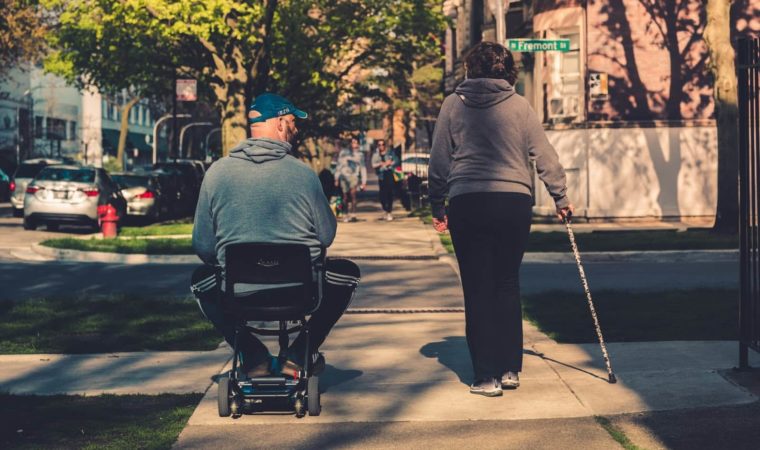Safeguarding the Vulnerable: Combating Assaults and Robberies Against People with Disabilities
By: Eric Anderson
In an ideal world, every person would feel safe and secure, regardless of their abilities. As a quadriplegic living in the city, I always felt safe, wheeling around downtown cloaked in a false sense of security, convinced nobody would stoop so low to rob somebody in my condition. However, I’ve personally been the victim of two robberies in the last two years, one of which was a terrifying ordeal that still haunts me. Unfortunately, individuals with disabilities often face increased vulnerability to assaults and robberies, making it crucial to address these issues and promote their safety. This blog post sheds light on the concerning rise in such incidents starting from 2020 and provides actionable precautions that people with disabilities can take to protect themselves.
The Alarming Statistics
Over the past few years, there has been a distressing surge in assaults and robberies targeting people with disabilities. These incidents not only violate their fundamental rights but also undermine their trust in society. While it is disheartening to witness such trends, it is essential to examine the statistics to fully comprehend the scope of the problem.
According to data collected from various sources, including law enforcement agencies and disability advocacy organizations, the following statistics highlight the severity of the issue:
- The National Crime Victimization Survey (NCVS) reported an estimated 650,000 violent crimes against people with disabilities in 2020.
- The Disability Equality Index found that assault rates against individuals with disabilities increased by 22% from 2020 to 2022.
- The American Association of People with Disabilities (AAPD) revealed that 1 in 4 individuals with disabilities experienced a robbery or assault in the past year, and are twice as likely to be the victim of a robbery or assault than any other demographic in the U.S. (Yet, for reasons unknown these overwhelming statistics are almost completely ignored by the mainstream media.)
Precautions for Personal Safety
While the responsibility for ensuring safety lies with society, individuals with disabilities can also take precautions to reduce their risk of becoming victims of assault or robbery. Here are some proactive steps they can consider:
Awareness and Preparedness
- Stay informed about local crime trends and areas with higher risks and do your best to avoid such areas. When traveling alone it is vital to constantly be conscience of your surroundings, while continually staying visual and perceptive. In short, always have your head on a swivel.
- Develop an emergency plan with trusted friends or family members. Memorize important phone numbers and keep a list of emergency contacts accessible, and always know where the closest law enforcement and security agencies frequently patrol.
Personal Safety Devices
- Carry a whistle, personal alarm, or a back-up cell phone if possible. I’m not going to advocate for carrying personal weapons such as a gun or taser, although I respect a law-abiding citizens constitutional right to carry if allowed by law. However, it’s important to note people with disabilities are mostly at a physical disadvantage against able-bodied criminals and there are many scenarios that could arise when weapons are utilized by either or both parties involved and escalate an already dangerous situation.
- Establish clear communication methods to express needs, concerns, and attempt to deescalate a crime in process. If you have a disability and are robbed or assaulted most of the time the safest way out of the situation is to calmly hand over your possessions.
Travel Safety
- Inform a trusted person about travel plans and expected arrival times.
- Utilize accessible transportation options or travel with a trusted companion when possible.
Online Safety
Be cautious when sharing personal information on social media platforms. Regularly review privacy settings and avoid accepting friend requests from unknown individuals. Skilled criminals use smart phones and their tracking information to find vulnerable individuals to prey upon.
Conclusion
Assaults and robberies against people with disabilities are distressing realities that need urgent attention. By raising awareness about these issues and taking proactive steps to enhance personal safety, individuals with disabilities can empower themselves and reduce their vulnerability. However, it is equally vital for society to address this problem holistically by implementing measures to prevent such incidents and ensure a safe and inclusive environment for all. If you were the victim of a crime and have a spinal cord injury or similar disability and suffered personal injury, or are seeking legal advice, please contact The Spinal Cord Injury Law Firm for a free consultation to discuss your rights. Phone: 1-877-SCI-FIRM or email: info@spinalcordinjurylawyers.com.
